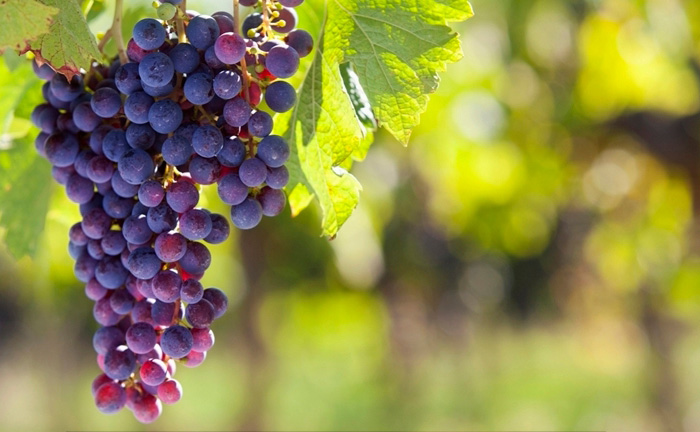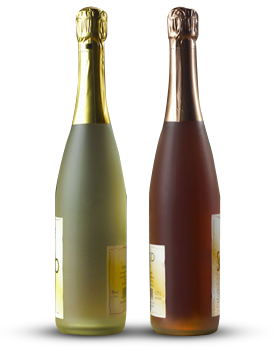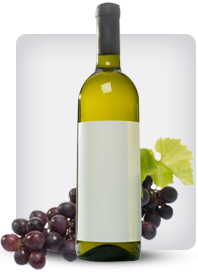

Tag: zinfandel
Aging Potential of Premium Zinfandel
Posted onZinfandel, often celebrated for its bold fruit flavors and spicy complexity, is a wine that can evolve beautifully with age. While many associate Zinfandel with youthful exuberance, premium examples from top vineyards possess the structure and balance to develop intriguing secondary characteristics over time. Understanding the aging potential of Zinfandel requires an exploration of its key traits, ideal growing conditions, and cellar-worthy selections.
The Structure of Age-Worthy Zinfandel
Not all Zinfandels are created equal when it comes to aging. The finest examples exhibit:
- Balanced Acidity – A vibrant acidity helps preserve freshness as the wine matures.
- Firm Tannins – Structured tannins provide the backbone necessary for long-term aging.
- Concentrated Fruit – Wines from old vines or low-yield vineyards offer depth and intensity.
- Moderate Alcohol – While Zinfandel is known for higher alcohol, excessive heat can disrupt aging potential.
How Zinfandel Evolves Over Time
In its youth, Zinfandel bursts with ripe blackberry, raspberry, and black pepper notes. With proper aging (5–15 years for premium bottles), the wine develops:
- Dried fig, leather, and tobacco nuances
- More integrated oak influences (vanilla, cedar)
- Softer tannins and a silkier texture
- Greater complexity and earthy undertones
Top Regions for Age-Worthy Zinfandel
Certain appellations consistently produce Zinfandels with excellent aging potential:
- Dry Creek Valley (Sonoma) – Known for structured, balanced Zins with firm tannins.
- Russian River Valley – Cooler climate adds acidity and elegance.
- Paso Robles (Old Vine Blocks) – Concentrated fruit and mineral depth.
- Napa Valley (Mountain Vineyards) – Bold yet age-worthy expressions.
Cellaring Tips for Zinfandel
To maximize aging potential:
- Store bottles at 55–60°F (13–15°C) with consistent humidity.
- Keep away from light and vibration.
- Lay bottles horizontally to keep corks moist.
- Monitor periodically; most premium Zinfandels peak between 8–12 years.
While Zinfandel is often enjoyed young, discerning collectors recognize that the finest examples can rival Cabernet Sauvignon in longevity. With careful selection and proper storage, aged Zinfandel reveals a captivating interplay of fruit, spice, and earth—a testament to this varietal’s underrated elegance.
Zinfandel for Spicy Food Pairing Ideas
Posted onWhen it comes to pairing wine with spicy cuisine, Zinfandel stands out as a bold and versatile choice. Known for its rich fruit flavors, moderate tannins, and peppery undertones, Zinfandel complements the heat and complexity of spicy dishes beautifully. Whether you’re enjoying a fiery Thai curry, smoky barbecue, or zesty Mexican fare, here’s how to make the most of Zinfandel’s pairing potential.
Why Zinfandel Works with Spicy Food
Zinfandel’s natural characteristics make it an excellent match for spicy dishes:
– Ripe blackberry, raspberry, and plum flavors balance the heat.
– Helps cleanse the palate between bites.
– Echoes the seasoning in many spicy dishes.
– High-alcohol wines can intensify spice, but Zinfandel’s balance avoids overwhelming the palate.
Top Zinfandel Pairings for Spicy Dishes
1. BBQ & Grilled Meats
Spicy barbecue ribs, pulled pork, or smoked brisket benefit from Zinfandel’s bold fruit and smoky undertones. The wine’s sweetness tempers the heat while its tannins cut through rich, fatty meats.
2. Spicy Italian Cuisine
Pepperoni pizza, arrabbiata pasta, or spicy sausage dishes pair wonderfully with Zinfandel. The wine’s jammy fruit contrasts the tomato acidity, while its spice notes enhance the dish’s seasoning.
3. Mexican & Tex-Mex Favorites
From spicy carne asada to chili-laden enchiladas, Zinfandel’s dark fruit and subtle sweetness balance the heat. Try it with mole sauce—its chocolatey depth harmonizes with Zinfandel’s ripe berry flavors.
4. Indian & Thai Curries
A fruit-driven Zinfandel can stand up to the bold spices in vindaloo or green curry. The wine’s ripe fruit softens the heat, while its structure complements creamy coconut-based sauces.
5. Cajun & Creole Dishes
Jambalaya, gumbo, or blackened fish gain depth when paired with Zinfandel. The wine’s peppery notes mirror the dish’s seasoning, creating a cohesive flavor experience.
Choosing the Right Zinfandel
– Better for moderately spicy dishes.
– Ideal for heavily spiced, smoky, or sweet-heat dishes.
– Excessive oak can clash with spice.
Final Tip: Serving Temperature
Chill Zinfandel slightly (around 60°F / 15°C) to keep the alcohol from amplifying the heat.
With its dynamic flavor profile, Zinfandel proves to be an outstanding partner for spicy cuisine. Whether you prefer smoky, tangy, or fiery dishes, there’s a Zinfandel pairing that will elevate your meal. Cheers to bold flavors!
Would you like recommendations for specific Zinfandel producers? Let me know!
Best Years for Napa Valley Zinfandel
Posted onNapa Valley is renowned for its world-class wines, and Zinfandel holds a special place among its offerings. Known for its bold fruit flavors, spicy notes, and robust structure, Napa Valley Zinfandel thrives in certain vintages more than others. Whether you’re a collector or an enthusiast, knowing the best years for Napa Valley Zinfandel can help you select exceptional bottles.
What Makes a Great Zinfandel Vintage?
Several factors contribute to an outstanding Zinfandel vintage:
- Weather Conditions: Warm days and cool nights allow grapes to ripen fully while retaining acidity.
- Rainfall: Moderate rainfall prevents drought stress but avoids excessive moisture that can dilute flavors.
- Harvest Timing: Picking at optimal ripeness ensures balanced sugar and tannin levels.
Top Vintages for Napa Valley Zinfandel
Based on critical acclaim and expert reviews, these are some of the best recent vintages for Napa Valley Zinfandel:
- 2016: A near-perfect growing season with ideal temperatures, producing rich, structured wines.
- 2012: A warm year yielding ripe, fruit-forward Zinfandels with excellent aging potential.
- 2007: A standout vintage with concentrated flavors and balanced acidity.
- 1997: A legendary year for Napa Zinfandel, known for its depth and complexity.
How to Identify High-Quality Zinfandel
When selecting a bottle, consider the following:
- Producer Reputation: Wineries like Ridge, Turley, and Robert Biale are Zinfandel specialists.
- Alcohol Content: Napa Zinfandels typically range from 14.5% to 16% ABV—higher levels often indicate ripeness.
- Tasting Notes: Look for descriptors like blackberry, pepper, and vanilla, which signify well-crafted Zinfandel.
Final Thoughts
While personal taste plays a role, vintages like 2016, 2012, and 1997 stand out as exceptional years for Napa Valley Zinfandel. Whether you’re enjoying a young, vibrant bottle or a well-aged classic, these vintages offer some of the best expressions of this beloved varietal.
Note: Wine quality can vary by producer, so always research specific wineries for the most accurate assessments.
Climate Impact on Zinfandel Quality
Posted onZinfandel, one of California’s signature grape varieties, is highly sensitive to climatic conditions. The quality of Zinfandel wines—ranging from bold, fruit-forward expressions to more structured, spicy profiles—is deeply influenced by temperature, rainfall, and sunlight exposure. As climate change alters growing conditions worldwide, understanding its impact on Zinfandel is crucial for winemakers and enthusiasts alike.
Temperature: A Delicate Balance
Zinfandel thrives in warm climates but suffers under extreme heat. Optimal ripening occurs between 75°F and 90°F (24°C–32°C). Excessive temperatures can lead to:
- Over-ripening: High sugar accumulation, resulting in excessively alcoholic wines with reduced acidity.
- Sunburn: Direct heat can damage grape skins, affecting tannin structure and color.
- Loss of Aromatics: Volatile compounds that contribute to Zinfandel’s berry and spice notes may degrade.
Conversely, cooler climates produce Zinfandel with higher acidity and fresher fruit flavors, though insufficient warmth may hinder full phenolic ripeness.
Water Stress and Drought Resilience
Zinfandel vines are relatively drought-tolerant, but prolonged water stress can reduce yields and concentrate flavors—sometimes beneficially. However, severe drought leads to:
- Berry Shrivel: Diminished juice content, affecting wine volume.
- Uneven Ripening: Clusters may contain both underripe and overripe grapes.
Conversely, excessive rainfall near harvest dilutes flavors and increases disease pressure (e.g., bunch rot).
Sunlight and Microclimates
Zinfandel benefits from ample sunlight to develop rich color and polyphenols. However, in hotter regions, canopy management (e.g., leaf thinning) is essential to prevent sun damage. Coastal fog, as in parts of Sonoma, moderates temperatures, preserving acidity and enhancing elegance.
Climate Change Adaptations
With rising global temperatures, Zinfandel growers are adopting strategies such as:
- Shifting Plantings: Moving vineyards to cooler elevations or coastal areas.
- Altering Harvest Times: Picking earlier to retain acidity.
- Exploring Clonal Selection: Choosing heat-resistant Zinfandel clones.
These adaptations aim to preserve Zinfandel’s signature balance of fruit intensity, spice, and structure.
Conclusion
Climate plays a pivotal role in shaping Zinfandel’s quality, with each element—temperature, water, and sunlight—contributing to its distinct profile. As viticultural regions face shifting conditions, proactive measures will be essential to sustain Zinfandel’s legacy as a versatile and expressive varietal.
Organic Zinfandel from Lodi: A Testament to Sustainable Winemaking Nestled in California’s Central Valley, the Lodi region has long been celebrated for its rich viticultural heritage. Among its most distinguished offerings is Organic Zinfandel—a wine that embodies both tradition and innovation. With a commitment to sustainable farming and artisanal craftsmanship, Lodi’s winemakers are producing Zinfandels that captivate the palate while respecting the environment. The Essence of Lodi’s Organic Zinfandel
Posted onLodi’s Mediterranean climate, marked by warm days and cool evenings, provides an ideal terroir for Zinfandel grapes. Organic farming practices further enhance the quality of the fruit, eliminating synthetic pesticides and fertilizers in favor of natural alternatives. The result is a wine with vibrant fruit flavors—think blackberry, raspberry, and dark cherry—complemented by subtle spice and earthy undertones.
Sustainability at the Core
Beyond taste, what sets Organic Zinfandel from Lodi apart is its dedication to sustainability. Many vineyards in the region are certified organic or biodynamic, prioritizing soil health, water conservation, and biodiversity. These practices not only yield superior grapes but also ensure the longevity of the land for future generations.
Pairing and Enjoyment
This versatile wine pairs beautifully with a variety of dishes. Its bold fruit profile complements grilled meats, while its balanced acidity makes it an excellent match for tomato-based pasta or aged cheeses. Serve slightly below room temperature (around 60°F) to fully appreciate its complexity.
Whether you’re a seasoned oenophile or a casual wine enthusiast, Organic Zinfandel from Lodi offers a sip of California’s finest—crafted with care for both people and the planet.
popular posts
-

Top-rated Napa Valley Cabernet Sauvignon 2025: A Vintage of Elegance and Power
11-13 2025The 2025 vintage in Napa Valley is already being heralded as one for the history books. A near-perfect growing season, marked by a mild Read More
-

Top-Rated Old-Vine Zinfandel 2025: A Vintage of Power and Poetry
11-10 2025The year 2025 has bestowed upon Zinfandel lovers a vintage to remember. While trends in the wine world come and go, the profound depth Read More

